Want to know indian satellite names? Well you have landed on the right article.
The term "satellite" refers to a man-made device sent into space for a variety of purposes, including remote sensing, weather forecasting, and research. Since 1975, India has successfully launched a variety of satellites.
The India Space Research Organisation (ISRO) was established in 1969 and is the country's sole space agency. It is in charge of the design, construction, launch, and operation of these spacecraft. Bangalore is home to ISRO's headquarters.
ISRO has launched a variety of satellites, such as Indian remote sensing satellites, GPS or navigation satellites, spy satellites, and military satellites. Here is the complete list of satellites launched by India since 1975.
Indian Satellite Names (2022)
1. Aryabhatta

Launched in 1975. It was launched from a Russian satellite manufactured by the ISRO. It is India's first satellite
The satellite's primary goal was to gain expertise in designing and operating spacecraft.
Features
2. Bhaskara Sega-I
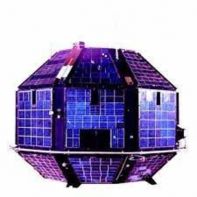
Launched in 1979. It was equipped with two television cameras as well as a satellite microwave radiometer (SAMIR).
It was an Earth Observation Satellite with Remote Sensing for the first time.
Features
3. Rohini Technology Payload
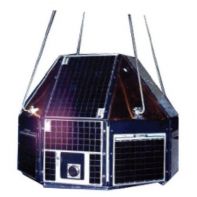
Launched in 1979. It was designed to assess the performance of the SLV-3. It failed to get into orbit.
Rohini was India's first launch vehicle, during its first experimental flight.
Features
4. Rohini RS-1
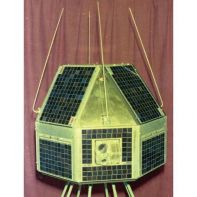
Launched in 1980. It was used to assess the in-flight capabilities of SLV-3's second experimental launch.
It marked the launch of India's first indigenous satellite.
Features
5. Rohini RS-D1
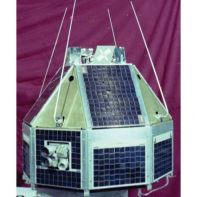
Launched in 1981. Used a landmark sensor payload. Used to undertake various remote sensing technology studies
SLV-3's first developmental launch was used to launch this project.
Features
6. Apple (Ariane Passenger Payload Experiment)
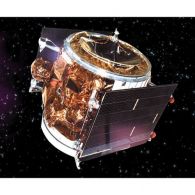
Launched in 1981. Provided experience in the construction and operation of a three-axis stabilized communication satellite payload experiment.
The first satellite for experimental communication.
Features
7. Bhaskara-II
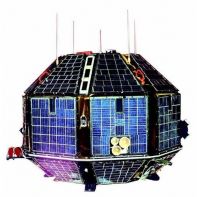
Launched in 1981. The first Indian satellite in orbit for Earth observation. Provided end-to-end knowledge in constructing and operating a remote sensing satellite technology.
Features
8. INSAT-1A
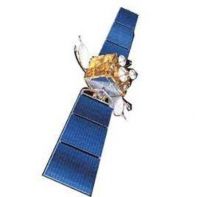
Launched in 1982. Procured from the USA. INSAT-1A only worked for six months. The first multipurpose communication and meteorology satellite.
Features
9. Rohini RS-D2

Launched in 1983. The second developmental launch of SLV-3 was used. It was operational for 17-month. Equipped with a smart sensor camera that took over 2500 photos.
Features
10. INSAT-1B
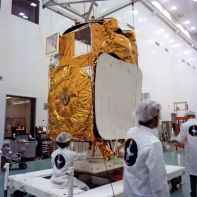
Launched in 1983. Weather and disaster warnings were provided in great detail. Television, radio, and telecommunications were all revolutionized.
Features
11. SROSS-1 (Stretched Rohini Satellite Series)
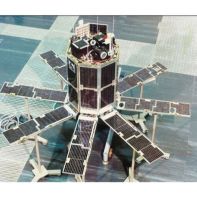
Launched in 1987. The payload was carried for gamma-ray astronomy and launch vehicle performance monitoring. It failed to get into orbit.
Features
12. IRS-1A
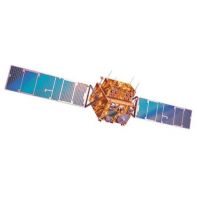
Launched in 1988. Satellite for Earth observation. It was the first operating remote sensing satellite.
It was equipped with a linear imaging self-scanning device that provided imagery for a variety of uses.
Features
13. SROSS-2
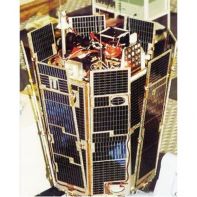
Launched in 1988. The spacecraft was launched atop its launch vehicle onto the ASLV's second development site. It was unable to enter orbit.
Features
14. INSAT-1C
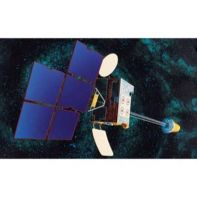
Launched in 1988. INSAT-1C is same as INSAT-1B. Only served for one and a half years. Used by major government entities such as All India Radio, Doordarshan, the Department of Space, and the Indian Meteorological Department
Features
15. INSAT-1D
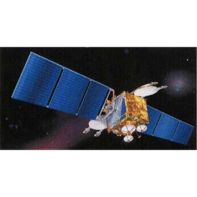
Launched in 1990. Same as the INSAT-1A. It is still in use. INSAT-1D was the INSAT-1 series' fourth and final multipurpose geostationary satellite
Features
16. IRS-1B
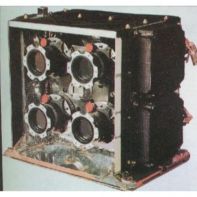
Launched in 1991. Satellite for Earth observation. The project's purpose was to advance technology and its applications. To study better use of Earth's natural resources.
Features
17. INSAT-2DT
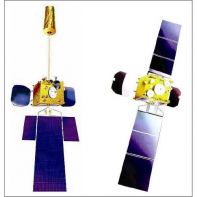
Launched in 1992. Initially launched as Arabsat 1C. It was a communications satellite. Initially operated by Arabsat, subsequently by ISRO.
Features
18. SROSS-C
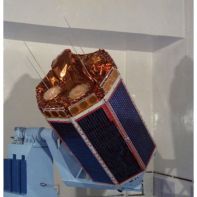
Launched in 1992. SROSS C carried out two successful experiments: one to identify gamma-ray bursts and the other to examine the Earth's upper atmosphere.
Features
19. INSAT-2A
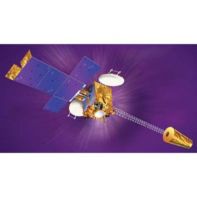
Launched in 1992. INSAT-2A is the first satellite in India's second-generation INSAT-2 series. It has a higher capability than INSAT-1. It is still in use
Features
20. INSAT-2B
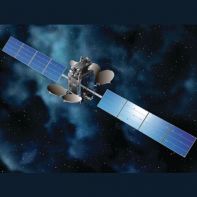
Launched in 1993. INSAT-2B was the second INSAT 2 Series satellite. It was aimed at providing telecommunications and weather monitoring services.
Features
21. IRS-1E
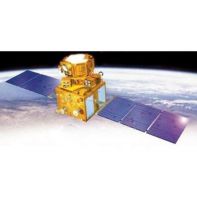
Launched in 1993. IRS-P1 (Indian Experimental Earth Observation Satellite) is another name for IRS-1E. Launched to develop earth pictures utilising onboard equipment. The satellite failed to reach orbit.
Features
22. SROSS-C2
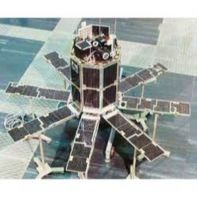
Launched in 1994. They are a more advanced version of the gamma-ray burst experiments carried out on the SROSS-C satellite, which were successful.
Features
23. IRS-P2
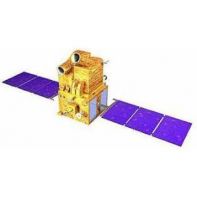
Launched in 1994. Satellite for Earth observation. PSLV's second developmental flight was used to launch the satellite. In 1997, after three years of service, the mission was completed.
Features
24. INSAT-2C
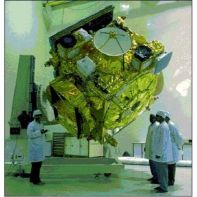
Launched in 1995. It has capabilities outside of India, such as mobile satellite service, business communication, and television outreach. It is still in use.
Features
25. IRS-1C

Launched in 1995. IRS-1C is the first operational second-generation remote sensing satellite in the world. On board, the satellite's payloads have enhanced capabilities, such as better spatial resolution.
Features
26. IRS-P3
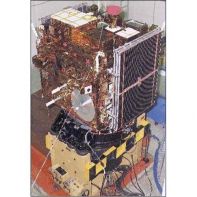
Launched in 1996. An Earth observation satellite. Remote sensing and X-ray astronomy payload.
Features
27. INSAT-2D
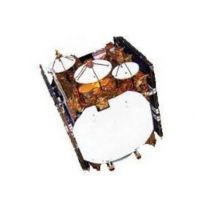
Launched in 1997. INSAT-2D was a communication satellite. Similar to INSAT-2C.
Features
28. IRS-1D
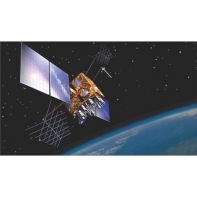
Launched in 1997. Satellite for Earth observation. It is identical to IRS – 1C.
Features
29. INSAT-2E
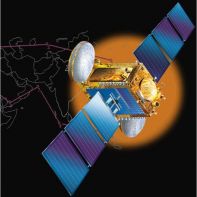
Launched in 1999. A satellite with multiple functions, including communication and weather forecasting. The Indian National Spacecraft System is in charge of it.
Features
30. OceanSat-1
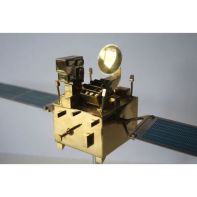
Launched in 1999. Satellite for Earth observation. The first ocean-focused satellite by India is IRS-P4 (OCEANSAT).
Features
31. INSAT-3B
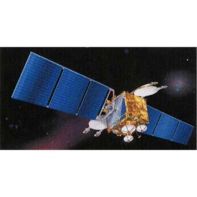
Launched in 2000. The first of five INSAT-3 class spacecraft manufactured by ISRO to join the INSAT system.
Features
32. GSAT-1
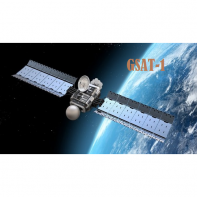
Launched in 2001. The first developmental flight of the Geosynchronous Satellite Launch Vehicle, GSLV-D1, was used for the launch.
Features
33. TES (Technology Experiment Satellite)
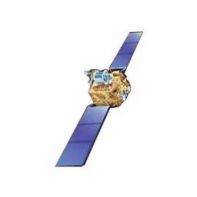
Launched in 2001.
Features
34. INSAT-3C

Launched in 2002. Designed to increase the operational capability of the existing INSAT
Features
35. Kalpana-1
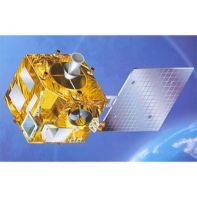
Launched in 2002. ISRO created this first meteorological satellite for India. METSAT was the original name for the satellite.
Features
36. INSAT-3A
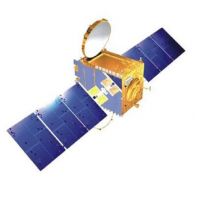
Launched in 2003. A geostationary satellite that can be used for a variety of purposes.
Features
37. GSAT-2
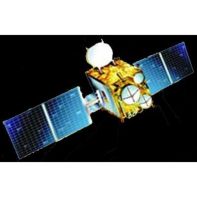
Launched in 2003. An experimental satellite.
Features
38. INSAT-3E
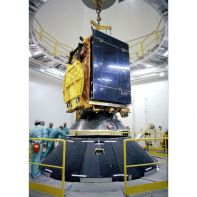
Launched in 2003. INSAT-3E is the fourth INSAT-3 series satellite to be sent into orbit.
Features
39. ResourceSat-1
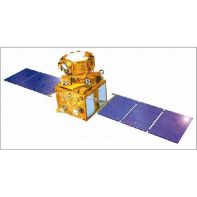
Launched in 2003. An earth observation satellite. Also known as RS P6 (Indian Remote Sensing Satellite).
Features
40. GSAT-3
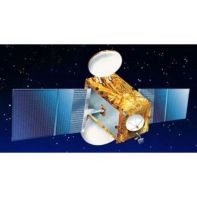
Launched in 2004. Also known as EDUSAT. The first and only educational satellite in India.
Features
41. CartoSat-1
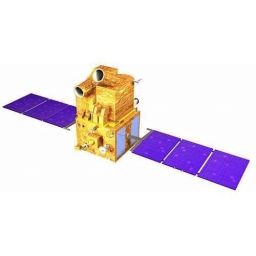
Launched in 2005. Satellite for Earth observation. It captures stereographic in-orbit photographs with a 2.5-meter resolution. In 126 days, the satellite orbits the entire globe in 1867 orbits.
42. HAMSAT

Launched in 2005. HAMSAT is a microsatellite dedicated to providing amateur radio services through satellite to the national and international amateur radio networks (HAM).
43. INSAT-4A

Launched in 2005. Satellite technology for direct-to-home television broadcasting. NSAT-4A's goals included high-definition television, high-speed data transmission, and broadcasting.
44. INSAT-4C
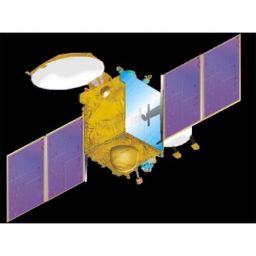
Launched in 2006. A geosynchronous orbit satellite. Third satellite in the INSAT-4 series. It failed to reach orbit.
45. CartoSat-2
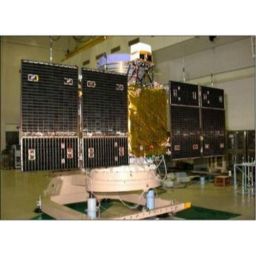
Launched in 2007. CartoSat-2 is a geostationary satellite. A panchromatic camera on board an advanced remote sensing satellite, capable of generating scene-specific spot pictures. It is one of the nine satellites that make up the CartoSat constellation.
46. SRE-1 (Space Capsule Recovery Experiment)

Launched in 2007. Experimental satellite to run tests in microgravity. Launched alongside CARTOSAT-2 as a co-passenger. SRE-1 was successfully de-orbited and recovered.
47. INSAT-4B
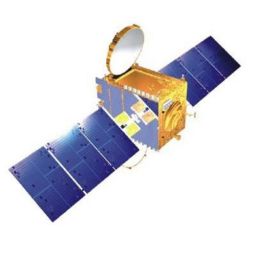
Launched in 2007 . Identical as INSAT-4A, but with the added capability of providing direct-to-home (DTH) television services and other communications.
48. INSAT-4CR
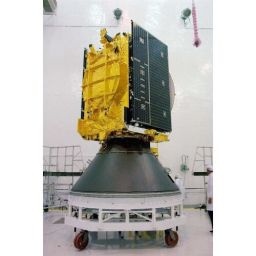
Launched in 2007. INSAT-4C's replacement satellite. It was equipped with 12 high-powered Ku-band transponders for direct-to-home (DTH) television broadcasting.
49. CartoSat-2A

Orbiting in a Sun-synchronous orbit. Launched in 2008. Cartosat-2A is the third Earth observation satellite in the CartoSat series.
50. IMS-1
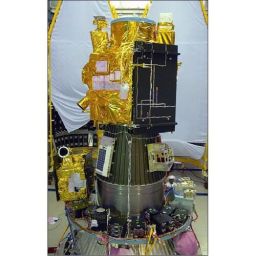
Launched in 2008. Used ISRO's Indian Mini Satellite for the first time. Also known as TWSat (Third World Satellite). Launched alongside CARTOSAT-2A.
51. Chandrayaan-1
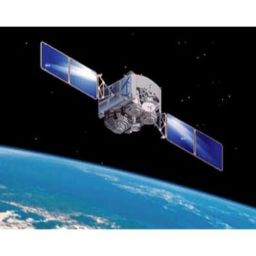
Launched in 2008. India’s first lunar mission. This was a huge boost for India. It contained 11 scientific instruments made in India, the United States, the United Kingdom, Germany, Sweden, and Bulgaria.
52. RISAT-2
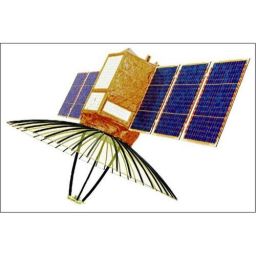
Launched in 2009. An all-weather radar imaging satellite. Used to monitor Indian borders as part of anti-terrorist and anti-infiltration efforts.
53. AnuSat-1
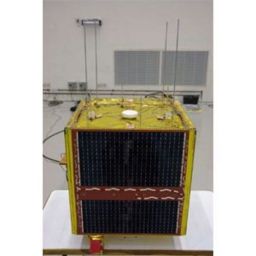
Launched in 2009. Aerospace Engineering, Madras Institute of Technology (MIT), Anna University planned, developed, and integrated it. Amateur radio and technology demonstration tests and experiments.
54. OceanSat-2
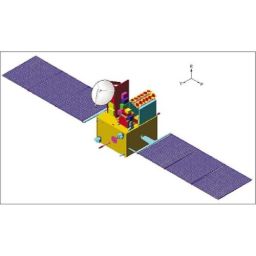
Launched in 2009. Data is collected for oceanic, coastal, and atmospheric purposes. Oceansat-1's mission was continued through this.
55. GSAT-4
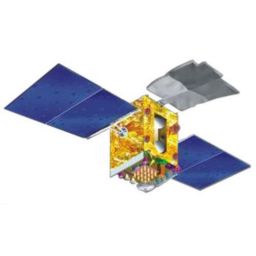
Launched in 2010. An Experimental Communication and Navigation Satellite. Also known as HealthSat. Ion propulsion was used for the first time by an Indian satellite. It failed to enter orbit.
56. CartoSat-2B
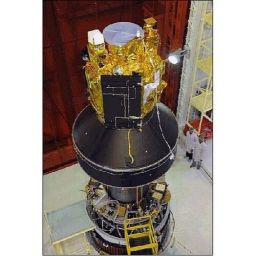
Launched in 2010. Satellite for Earth observation and remote sensing. Similar to CARTOSAT-2A. It includes a panchromatic (PAN) camera for taking b/w images in the visible part of the electromagnetic spectrum.
57. StudSat
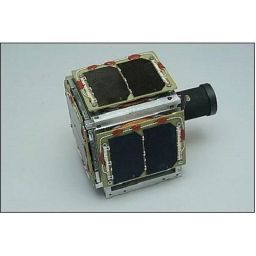
Launched in 2010. India's first picosatellite (weighing less than 1 kg). A group of engineers from seven engineering institutes in Karnataka and Andhra Pradesh collaborated on the project.
58. GSAT-5P
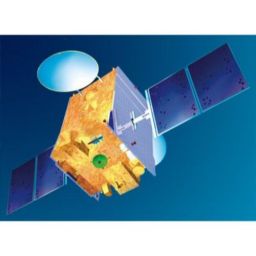
Launched in 2010. Communication satellite. Operates in geosynchronous orbit.
59. ResourceSat-2
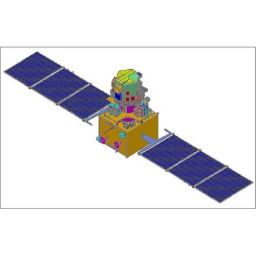
Launched in 2011. This is the eighteenth remote-sensing satellite launched by ISRO. Designed to give improved multispectral and geographic coverage for data. PSLV-C16 (launch vehicle) launched three satellites.
60. YouthSat
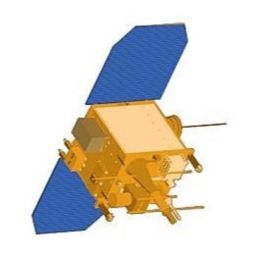
Launched in 2011. An Indo-Russian stellar and atmospheric satellite. A joint scientific and educational microsatellite project between the two countries. It weighed 92 kg.
61. GSAT-8 or INSAT-4G

Launched in 2011. An Indian communication satellite. GAGAN payload is carried for the first time. It carries 24 Ku-band transponders and a two-channel GAGAN payload in the L1 and L5 bands.
62. GSAT-12
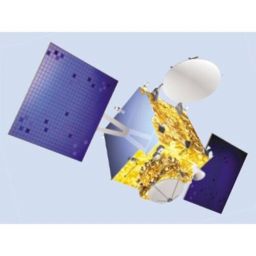
Launched in 2011. Communication satellite. The successor to the INSAT-3B satellite. Operations include tele-education, telemedicine, disaster management, and satellite internet access.
63. Megha-Tropiques
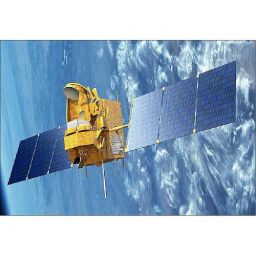
Launched in 2011. The SAPHIR atmospheric microwave-sounding radiometer is aboard Megha-Tropiques. It’s a French-Indian spacecraft orbiting the tropics.
64. Jugnu
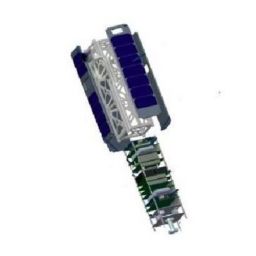
Launched in 2011. A CubeSat spacecraft for remote sensing. Designed and developed by IIT Kanpur. A nanosatellite that collects data for agricultural and disaster management.
65. SRMSat
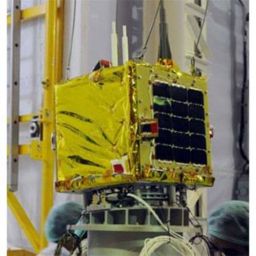
Launched in 2011. SRM University built this nano-satellite. It monitors greenhouse gases in the atmosphere.
66. RISAT-1
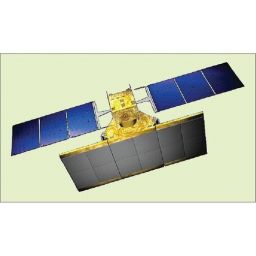
Launched in 2012. RISAT-1 is the world's first indigenous all-weather radar imaging satellite. It aids agricultural and disaster management.
67. GSAT-10
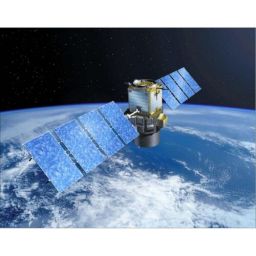
Launched in 2012. India's advanced communication satellite. A high-powered satellite that is part of the INSAT system.
68. SARAL

Launched in 2013. SARAL is a combined Indo-French satellite programme that includes ARGOS and ALTIKA. It takes altimetric measurements to learn more about ocean circulation and sea surface elevation.
69. IRNSS-1Asystem.
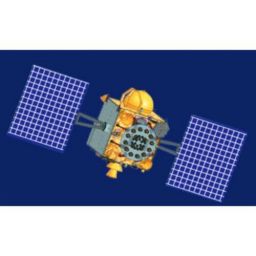
Launched in 2013. The Indian Regional Navigation Satellite System's first satellite is IRNSS-1A. It's one of seven satellites that make up the IRNSS
70. INSAT-3D

Launched in 2013. The INSAT-3 series of satellites from ISRO are multipurpose spacecraft. Modern weather monitoring payloads. Functions as a meteorological satellite.
71. GSAT-7
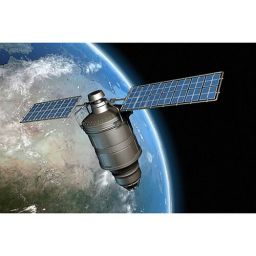
Launched in 2013. A communication satellite for the Indian military. Allows the navy to expand its blue-water capabilities and not rely on foreign satellites for communication.
72. Mars Orbiter Mission (MOM) or Mangalyaan-1
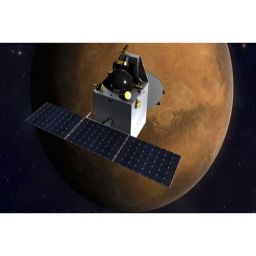
Launched in 2013. The first Mars orbiter by India. Launched to develop the technology needed for interplanetary mission design, planning, control, and operations.
73. GSAT-14
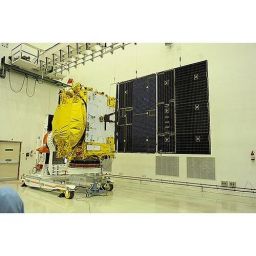
Launched in 2014. A communication satellite. India's twenty-third geostationary communications satellite. It replaced the GSAT-3 satellite.
74. IRNSS-1B
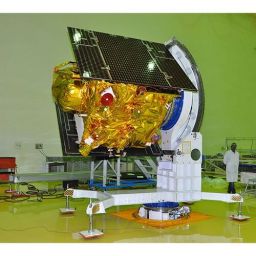
Launched in 2014. IRNSS-1B is the Indian Regional Navigation Satellite System's second satellite. It has a ten-year life span
75. IRNSS-1C
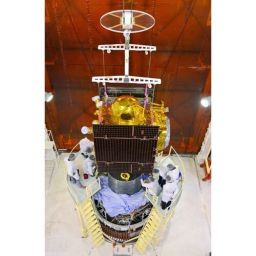
Launched in 2014. IRNSS-1C is the Indian Regional Navigation Satellite System's third satellite. Two payloads were carried: a navigation and CDMA payload and a laser retro-reflector.
76. GSAT-16
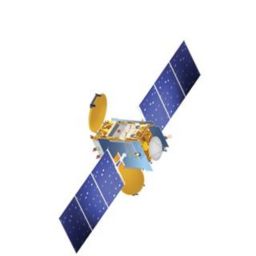
Launched in 2014. GSAT-16 is India's twenty-fourth communication satellite.Equipped with 48 communication transponders
77. IRNSS-1D
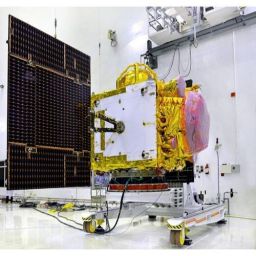
Launched in 2015. Similar to IRNSS-1A, 1B, and 1C. It was completed in less than four months. The only satellite in the constellation with navigational capabilities.
78. GSAT-6
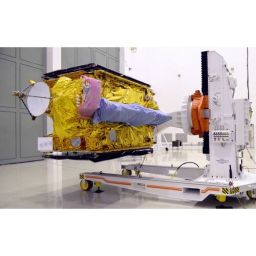
Launched in 2015. Multi-media communication satellite. Performs S-DMB (Satellite Digital Multimedia Broadcasting) function
79. Astrosat
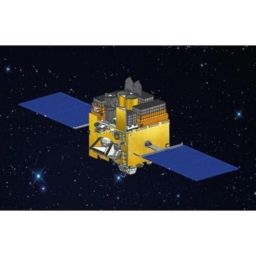
Launched in 2015. AstroSat is India's first dedicated astronomical project. Studies cosmic sources in the X-ray, optical, and UV spectral bands at the same time.
80. GSAT-15
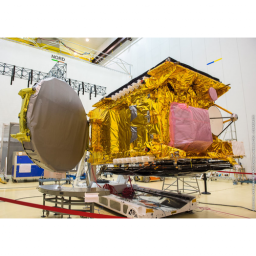
Launched in 2015. A communication satellite. It is a high-powered satellite, integrated into the INSAT/GSAT system.
81. IRNSS-1E
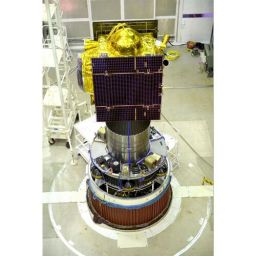
Launched in 2016. A satellite to provide navigational services. IRNSS-1E is the fifth satellite in the IRNSS constellation.
82. IRNSS-1F
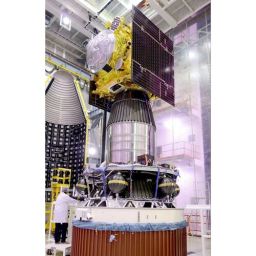
Launched in 2016. It is the sixth navigation satellite of the IRNSS. It provides navigational services.
83. IRNSS-1G
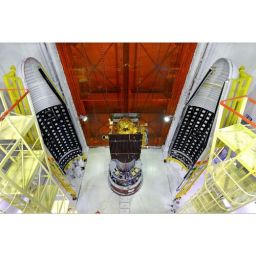
Launched in 2016. The last satellite of the IRNSS constellation. IRNSS was renamed NAVIC by the Indian government (Navigation Indian Constellation).
84. Cartosat-2C

Launched in 2016. Cartosat-2C is a Sun-synchronous Earth observation satellite. Fifth flying unit of CartoSat series.
85. SathyabamaSat
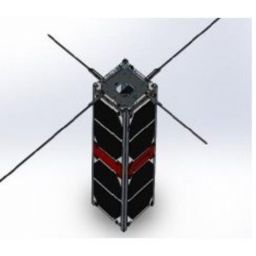
Launched in 2016. Sathyabama University in Chennai built this mini experimental satellite. Collect statistics on greenhouse gas emissions.
86. Swayam-1
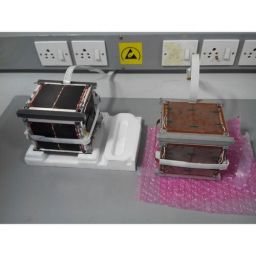
Launched in 2016. College of Engineering, Pune, built this 1-U picosatellite. The first Indian satellite to demonstrate passive altitude control.
87. INSAT-3DR
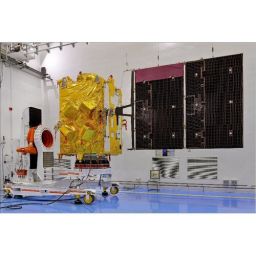
Launched in 2016. A weather satellite. It is built by ISRO and managed by the Indian National Satellite System.
88. Pratham
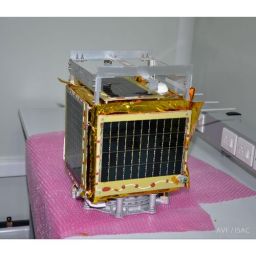
Launched in 2016. Satellite for ionospheric research in India. Launched to count electrons in the ionosphere. Built by IIT Bombay.
89. PISat
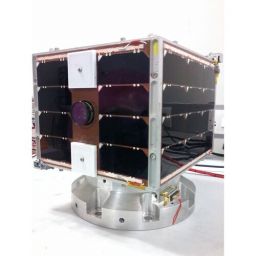
Launched in 2016. Remote sensing nanosatellite. Bengaluru's PES Institute of Technology created it. It contains a camera capable of capturing photos with a resolution of 80 metres.
90. ScatSat-1 (Scatterometer Spacecraft-1)
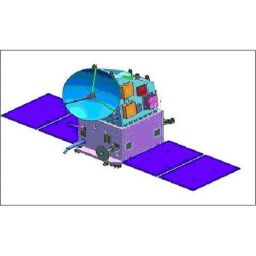
Launched in 2016. A miniature satellite by ISRO. It helps India anticipate and track cyclones and other weather events.
91. GSAT-18
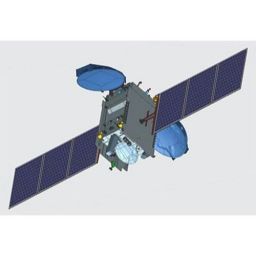
Launched in 2016. A communication satellite used by India. It was India's heaviest satellite.
92. ResourceSat-2A
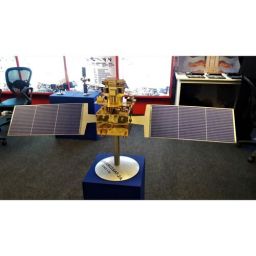
Launched in 2016. A remote sensing satellite. Operates data services.
93. CartoSat-2D
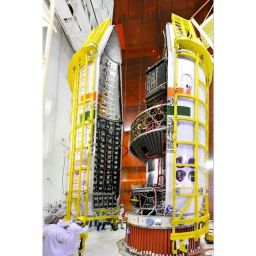
Launched in 2017. Earth observation satellite. Launched with 101 nanosatellites from around the world. With this flight, ISRO set a new record for launching the most satellites in one go.
94. INS-1A
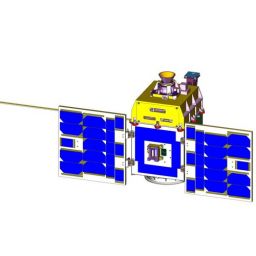
Launched in 2017. An Indian nanosatellite. Surface BRDF Radiometer (SBR) and Single Event Upset Monitor (SEUM) were carried as payloads.
95. INS-1B
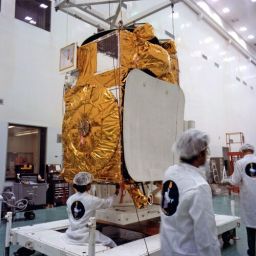
Launched in 2017. An Indian nanosatellite. The Earth Exosphere Lyman Alpha Analyzer (EELA) and Origami Camera payloads were carried.
96. South Asia Satellite
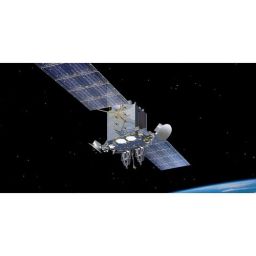
Launched in 2017. A communications and weather forecasting satellite. Administered by ISRO for the South Asian Association for Regional Cooperation (SAARC) region.
97. GSAT-19
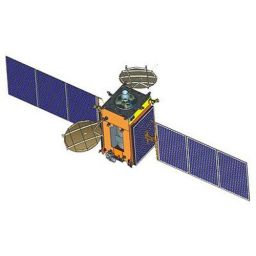
Launched in 2017. ISRO launched one of the heaviest satellites. It has a payload called the Geostationary Radiation Spectrometer (GRASP) that monitors and studies charged particles.
98. NIUSat
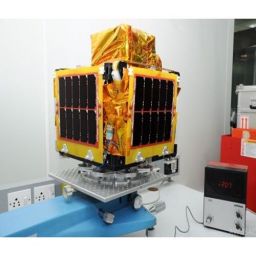
Launched in 2017. Developed by the Noorul Islam Centre for Higher Education (NICHE). It's used in agriculture and education.
99. CartoSat-2E
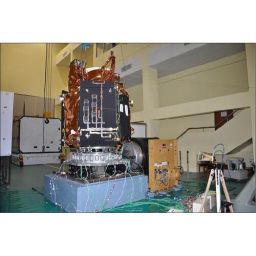
Launched in 2017. The 7th satellite in the CartoSat series. It acquires high-resolution, large-scale photographs for use in urban planning, infrastructure construction, and traffic control.
100. GSAT-17
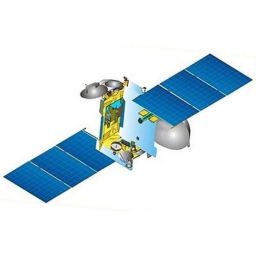
Launched in 2017 . A communication satellite. India's 18th communication satellite (and the country's heaviest to date).
101. IRNSS-1H
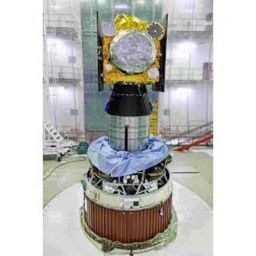
Launched in 2017. It was launched to replace the IRNSS-1A. The first satellite to be co-designed and produced with the help of the commercial sector.
102. CartoSat-2F
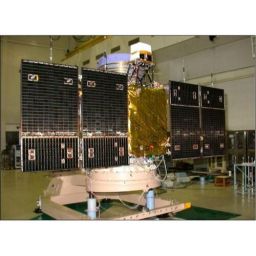
Launched in 2018. A satellite that monitors the Earth. identical to preceding CartoSat satellites 2C, 2D, and 2E. The CartoSat-2F is the CartoSat program's eighth flying unit.
103. MicroSat-TD
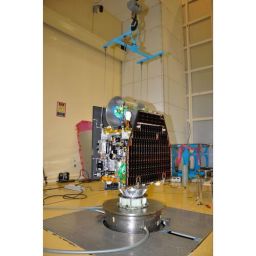
Launched in 2018. It’s a small Indian earth observation satellite. It is based on the IMS-1 spacecraft's SSB-2 bus.
104. INS-1C
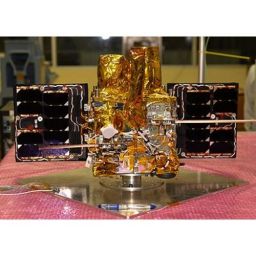
Launched in 2018. A nanosatellite by ISRO. Launched aboard PSLV to accompany larger satellites. The MMX-TD (Miniature Multi Spectral Imager-Technology Demonstrator) payload is carried by this satellite.
105. GSAT-6A
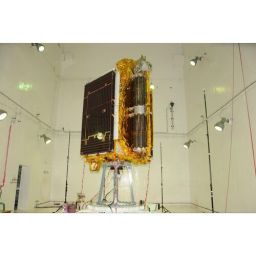
Launched in 2018. A high-power S-band communication satellite based on the I-2K bus, just like GSAT-6. It is expected to last about ten years.
106. IRNSS-II
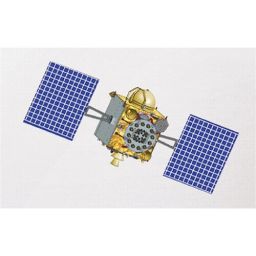
Launched in 2018. IRNSS-11 is the International Navigation Satellite System's (IRNSS) eleventh navigational satellite.
107. GSAT-29
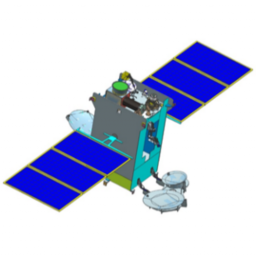
Launched in 2018. Launched with a payload of 3423 kg. Sends data in a variety of methods. There are a variety of beams on it.
108. HySIS
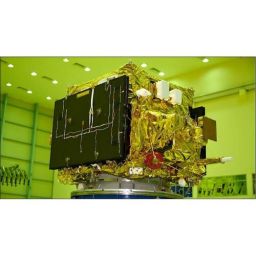
Launched in 2018. An Earth observation satellite. Launched to investigate the earth's surface in the visible, near-infrared, and shortwave infrared spectrums.
109. ExseedSat-1
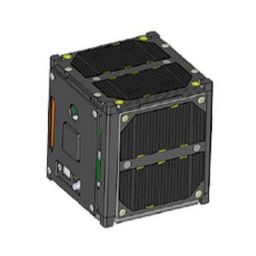
Launched in 2018. India's first privately manufactured satellite. Allows transmissions on the 145.9 MHz frequency.
110. GSAT-11
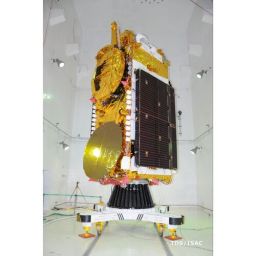
Launched in 2018. The first in a series of contemporary communication satellites. Important for nationwide high-speed Internet connectivity.
111. GSAT-7A
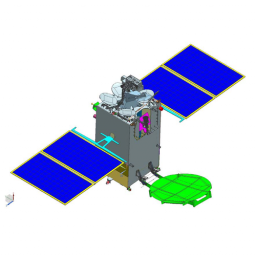
Launched in 2018. The Indian Air Force is the major user of GSAT-7A. It's a military communications satellite with cutting-edge technology.
112. Microsat-R
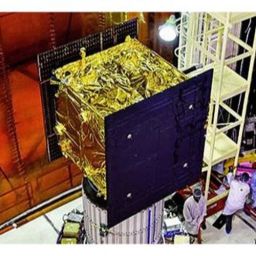
Launched in 2019. It was a DRDO-built earth-observing satellite, launched by ISRO. Designed for military purposes.
113. PS4 Stage attached with KalamSAT-V2
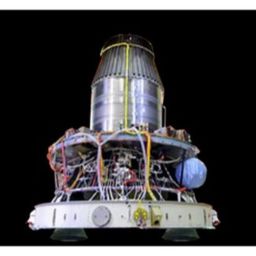
Launched in 2019. It has a cube shape and is 10 centimetres in diameter. This satellite was successfully launched from Sriharikota's Satish Dhawan space facility.
114. GSAT-31

Launched in 2019. A high-capacity communications satellite. The INSAT-4CR has reached the end of its life.
115. EMISAT
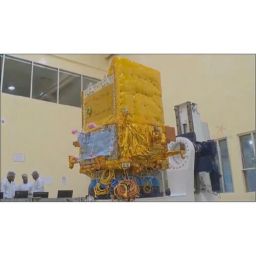
Launched in 2019. Measures the electromagnetic spectrum. It's a reconnaissance satellite from India. ISRO built it to help DRDO.
116. PS4 Stage attached with ExseedSat-2, AMSAT, ARIS and AIS payloads
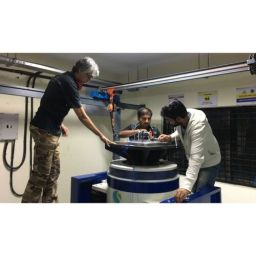
Launched in 2019. It was just a test satellite. Experiments on the fourth stage using it directly as a satellite.
117. RISAT-2B
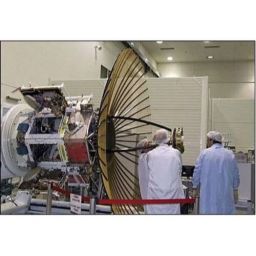
Launched in 2019. An all-weather radar imaging satellite. It improves agricultural and disaster management. Successor to the outdated RISAT-2.
118. Orbiter of Chandrayaan-2
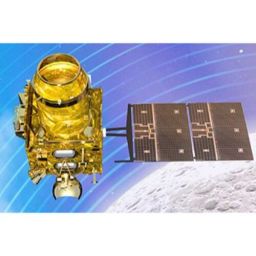
Launched in 2019. India's second lunar exploration mission. Investigates lunar topography, mineralogy, chemical abundance, the lunar exosphere, the occurrence of hydroxyl, and other topics.
119. Cartosat-3
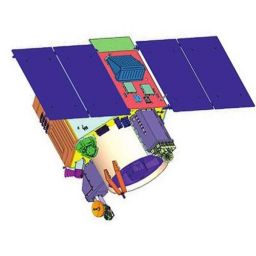
Launched in 2019. ISRO's third series of high-resolution imaging satellites is Cartosat-3. It was established in response to an increase in the demand for imaging services.
120. RISAT-2BR1
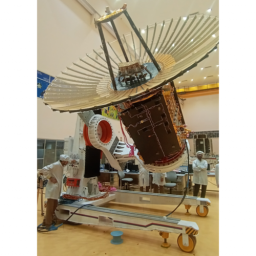
Launched in 2019. An Earth observation and radar imaging satellite. It has a 0.35-metre resolution, which is better than its predecessors.
121. GSAT-30
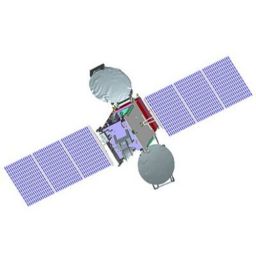
Launched in 2020. GSAT-30 is an Indian geostationary communications satellite. Provides direct-to-home (DTH), television broadcast, and VSAT operations.
122. EOS-01
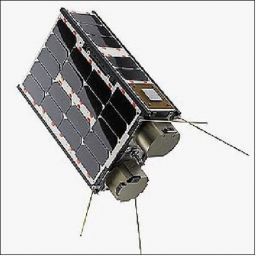
Launched in 2020. EOS-01 is a geostationary satellite. Helps with agricultural, forestry, and disaster relief efforts.
123. CMS-01
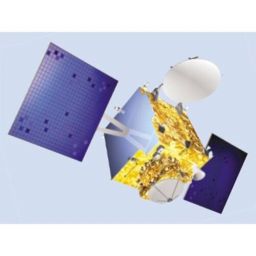
Launched in 2020. CMS-01 is a communication satellite that delivers services in the Extended-C Band of the radio frequency spectrum.
124. Sindhu Netra
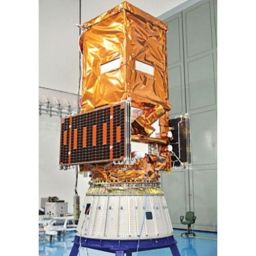
Launched in 2021. An earth observation satellite. Designed to assist the Indian Navy to monitor the Indian Ocean.
125. SDSat
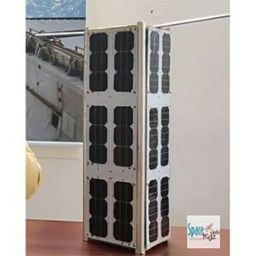
Launched in 2021. JIT developed this satellite under UNITYSat. Sriperumbudur's Jeppiaar Institute of Technology collaborated on the project.
126. JITSat
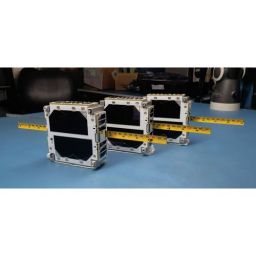
Launched in 2021. JIT developed this satellite under UNITYSat. Sriperumbudur's Jeppiaar Institute of Technology collaborated on the project.
127. GHRCESat

Launched in 2021, GHRCE developed this satellite under UNITYSat. Nagpur's G.H.Raisoni College of Engineering collaborated on this project.
128. Sri Shakthi Sat
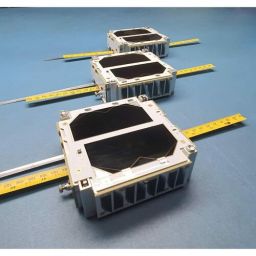
Launched in 2021. Sri Shakti developed this under UNITYSat. Sri Shakti Institute of Engineering and Technology, Coimbatore College of Engineering, Nagpur collaborated on this project.
129. EOS-03
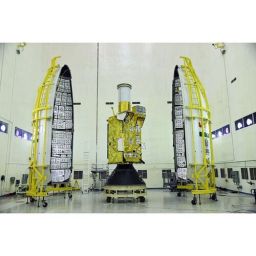
Launched in 2021. India's first real-time Earth observation satellite. India's first cutting-edge earth observation satellite.
Conclusion
The subjects of space, spacecraft, and satellites, always excite us. It feels great to know about such things. So that brings us to the end of this long list of indian satellite names that have been launched to date. This is a topic that every Indian should be familiar with.
Frequently Asked Questions
1. How many satellites are there in India?
There are a total of 129 Indian satellites. These include all kinds of satellites, orbits, and the intended function of the satellite.
2. What is the 1st satellite of India?
The Aryabhata satellite, named after a great Indian astronomer, was India's first satellite, designed and built entirely in India and launched on April 19, 1975, by a Soviet Kosmos-3M rocket from Kapustin Yar.
Also Read: Check out my reviews of the best image editing software, the top choices for video editing software, and my full guide to start a blog for beginners.


